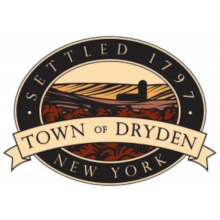
<p>The <a href="https://www.pewtrusts.org/en/">Pew Charitable Trusts </a>has begun publishing memos that will be useful for state broadband offices as they beef up staff to ensure state broadband grant funds are not wasted and track whether states are awarding grants to proposed projects in a way that advances various state’s goals in building a bridge across the digital divide.</p><p>One memo focuses on how allowing providers to object to applications can promote accountability. The second memo examines how state broadband offices can use scoring metrics to evaluate grant applications.</p><p><strong>The Challenge Process</strong></p><p>The first memo begins noting that by “providing a system for existing high-speed [I]nternet providers to raise concerns about grant applications, (it) can help state broadband offices ensure that public funds are not tapped multiple times for the same project or awarded to areas without sufficient need.”</p><p>That can be done through the “<a href="https://www.pewtrusts.org/-/media/assets/2022/01/broadband-grant-progra… process</a>,” which allows Internet Service Providers (ISPs) to challenge an application if the challenger can demonstrate that they already provide service in a grant application area, have started network construction in that area, or have plans to do so.</p><p>The memo boils down four summary points that are “key features from a variety of states.”</p><blockquote><p>• Challenge processes can be an important control to prevent public subsidies from being awarded to areas that are already receiving equivalent service or will receive equivalent service within a set period (e.g., 12 months). The challenge process can also help prevent a project from inappropriately receiving duplicative state, local, and/or federal funding.</p><p>• States can require providers to participate in the state’s data collection and mapping efforts in order to engage in the challenge process.</p><p>• The documentation required for a valid challenge varies among states, and can include shape files, address-level service information, service speed validation, and a signed affidavit attesting to the service. If allowed by state code, the data collected in the challenge process may be used by the state to update its maps.</p><p>• Notably, the challenge process can also refer to objections and evidence submitted by residents and communities to challenge the designated eligibility of a given area as it relates to the grant program’s guidelines and/or the area’s designation on a state’s broadband availability map.</p></blockquote><p>While it is important to target funds in areas most in need of better broadband access, we should note that <a href="https://muninetworks.org/content/monopoly-providers-mire-ntia-broadband… incumbent providers use the challenge process </a>to try to stave off competition in a market in which they are the only game in town.</p><p>Critics of municipal broadband proposals love to scream “overbuilding” when grants are used to build networks in areas where existing ISPs operate. But, as we’ve written about numerous times, “overbuilding” is an engineering term that has been hijacked to obscure what is fundamentally an economic issue i.e. creating competition in markets dominated by monopoly providers. </p><p><drupal-media data-entity-type="media" data-entity-uuid="76c2da3c-d631-417a-b912-e023742def8e" data-view-mode="medium_thumbnail" data-align="left"></drupal-media></p><p>In Colorado, lawmakers passed a bill that made it more difficult for ISPs to game the challenge process. That law, which we wrote about <a href="https://muninetworks.org/content/colorado-legislature-revamps-incumbent…;, gives existing ISP’s the “the right of first refusal.” However, the law only allows the challenger to halt a grant award by demonstrating they will match the speed and price of the grant applicant.</p><p>And in Minnesota, the challenge process specifically states that if an ISP challenges a grant that results in the grant application being denied but that ISP “does not fulfill the provider’s commitment to provide broadband service in the project area,” the <a href="https://mn.gov/deed/programs-services/broadband/grant-program/">provider is not allowed to make another challenge for the next two grant cycles</a>.</p><p>Also, we should note, that as it relates to grant applicants tapping public funds “multiple times,” the laws governing how federal funds can be used for building new networks in some instances do specifically allow for recipients to use more than one grant program to fund construction as we recently reported on in Georgia, in which <a href="https://muninetworks.org/content/altamaha-emc-brings-fiber-farmlands-ru… EMC is using a combination of funds </a>from the USDA’s ReConnect program, the Rural Digital Opportunity Fund (RDOF) and American Rescue Plan funds to build a fiber-to-the-home network across seven rural counties.</p><p><strong>Scoring Grant Applications</strong></p><p>The <a href="https://www.pewtrusts.org/en/research-and-analysis/speeches-and-testimo… memo </a>notes how “the choice and weight of metrics (in evaluating grant applications) should reflect each state’s priorities in order to ensure funded projects will advance state goals and deliver meaningful benefits to residents.”</p><p><drupal-media data-entity-type="media" data-entity-uuid="d6106ce4-30c6-4d21-8f27-070f719cc141" data-view-mode="medium_thumbnail" data-align="left"></drupal-media></p><p>Here, <a href="https://www.pewtrusts.org/-/media/assets/2022/01/broadband-grant-progra… lays out useful side-by-side comparisons </a>of the metrics used by Indiana, Minnesota, and Virginia. They chose those three states because all three have “relatively well-established state broadband grant programs (Minnesota, in particular) as well as programs that updated their scoring systems in 2020 and 2021.”</p><p>The memo covers six primary summary points:</p><blockquote><p>• The scoring metrics for evaluating grant applications can be a tool to promote and enforce state priorities.</p><p>• State grant programs use different point scales for scoring grant applications. For example, Minnesota uses a 120-point scale, Indiana uses a 250-point scale, and Virginia uses a 300-point scale. For comparative purposes, the below examples include the equivalent percentage of points awarded per category.</p><p>• Each program emphasizes different components in its scoring of applications, based on state priorities:</p><p>-Virginia awards up to 135 points (45%) for the applicant’s project budget and cost appropriateness. This includes up to 125 points for a cost-benefit index calculated by using the total amount of Virginia Telecommunication Initiative (VATI) funding requested and the total number of serviceable units.</p><p>-Minnesota places a greater emphasis on speed and the overall change in level of service available. See below for a table on Minnesota’s scoring rubric with a sliding scale of points available depending on current speeds, speeds after the build, and the total number of passings (up to 20 points or 17%).</p><p>-Indiana places a greater emphasis on the match contributed by applicants and utilizes a sliding scale of up to 65 points (26%) for projects with a higher cost match, with applicants offering to cover more than 75% of the cost receiving the maximum points.</p><p>• States may also incorporate other priorities into grant scoring. For example, several states award points for digital equity, affordability, adoption efforts, or for specific priority populations (e.g., Indiana awards up to 15 points [6%] for the inclusion of “Economically Disadvantaged Student Household Service Packages”). Virginia’s “Commonwealth Priorities” category allows for a flexible awarding for projects that align particularly well with the agency’s goals and directives.</p><p>• States can prioritize policy goals either by including them in the scoring rubric or by addressing them through screening eligibility requirements or a subsequent review phase following the application scoring process (i.e., if the final grant selection process is conducted by a board or commission, as in Colorado and Wisconsin). States can also reference these priorities as a component of a category on their scoring rubric.</p><p>• Notably, the potential impact of a state grant program’s scoring process may be limited by a need to classify areas that have received past federal or state funding as ineligible for grant funds. While this can serve as a protection against “overbuilding” or for complying with federal requirements, projects funded through these previous programs may offer service at inadequate speeds and census block-level analysis may overrepresent the actual level of coverage.</p></blockquote><p>While Pew’s memo looks at Indiana, Minnesota, and Virginia, our small footnote to that would be on how Wisconsin scores applicants. In Wisconsin, while the grant application process does not specifically favor municipal or cooperative projects, it does give <a href="https://psc.wi.gov/Documents/broadband/5-BF-2022_StateBroadbandExpansio… points to applicants that involve local governmental entities </a>partnering with private providers or what are known as public-private partnerships. </p><p>As states across the country are establishing or beefing up their broadband offices, it is important for these offices to effectively target broadband investments to ensure that taxpayers get the biggest bang for their buck. Pew is providing a valuable service in sharing these tools at this critical juncture in the <em>broadband-ification</em> of the nation.</p><p><em>Header image of computer “invest” button courtesy of QuoteInspector.com, Attribution-NoDerivatives 4.0 International (CC BY-ND 4.0)</em></p><p><em>Inline image of Scrabble pieces courtesy of gotcredit.com, attribution 2.0 Generic (CC BY 2.0)</em></p><p><em>Inline image of Pew Charitable Trusts logo courtesy of Pew Charitable Trusts</em></p>









